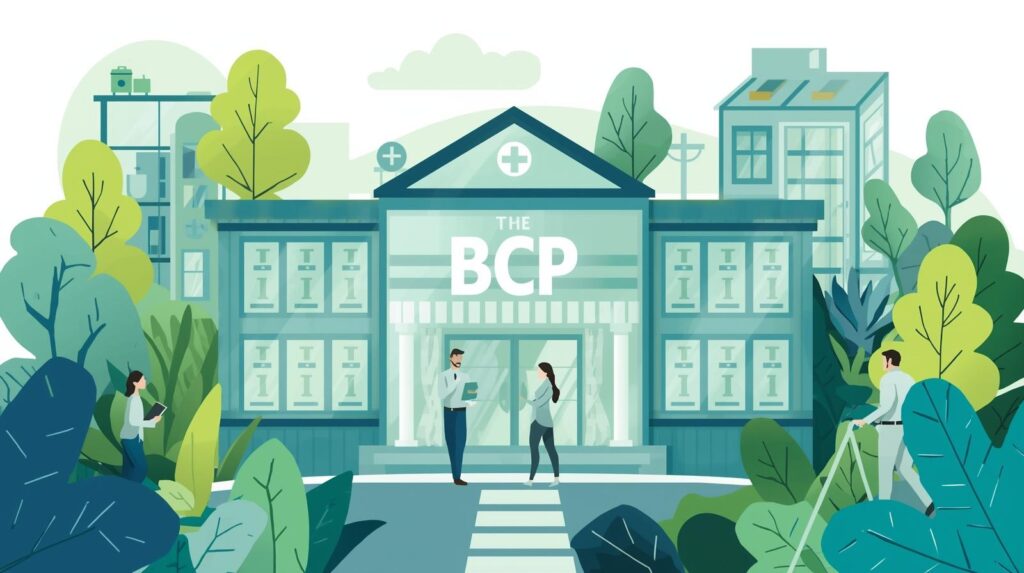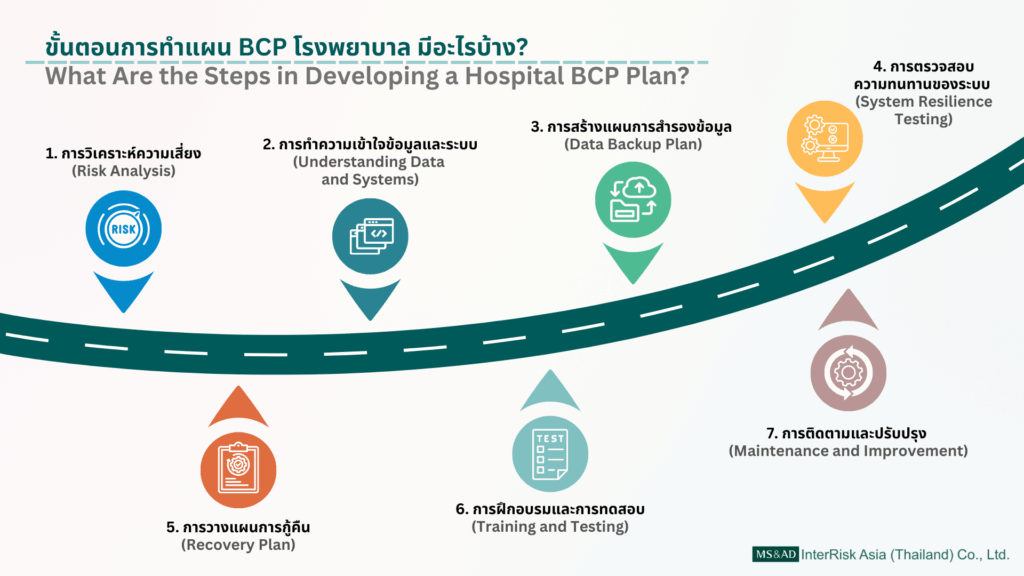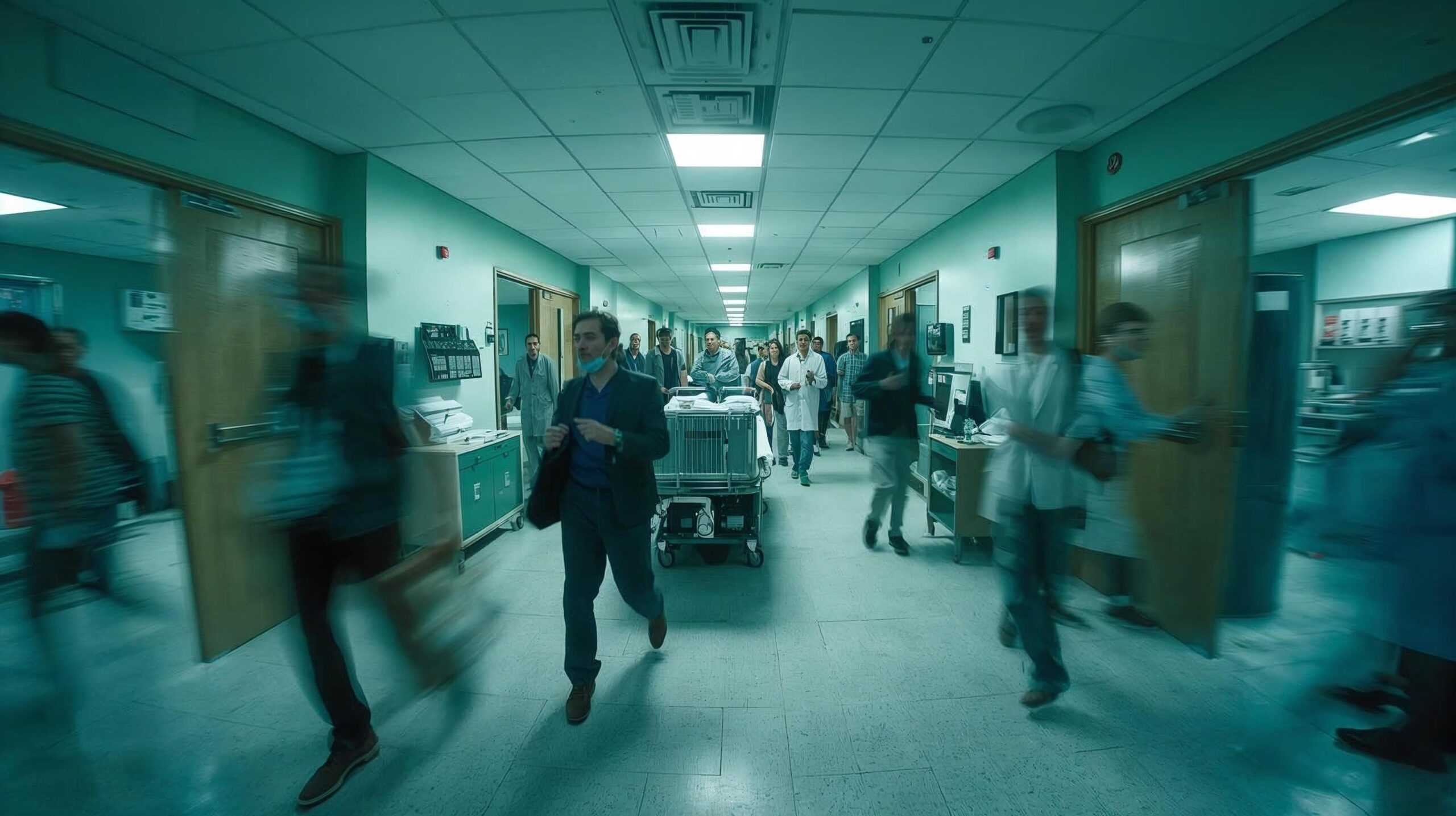Hospital Business Continuity Plan, A pathway to sustaining health care services in times of crisis.
In an era where digital systems play a crucial role in medical services, a hospital’s Business Continuity Plan (BCP) is no longer a distant or optional concern. Risks such as system outages, power failures, or natural disasters can occur at any time. When they do, the consequences can be severe, potentially halting patient care or causing the loss of critical data.
Having a comprehensive BCP and emergency response plan is essential to ensure that hospitals can continue operating efficiently, even under abnormal or crisis conditions.
HIGHLIGHTS:
- The Hospital Business Continuity Plan (BCP) is a proactive management strategy designed to maintain uninterrupted medical services during emergency situations that cause operational disruptions. In the context of health care, this translates to the ability to continue life-saving treatments even when unforeseen events occur.
- An effective Hospital BCP is built upon a structured framework and regular exercises. It includes thorough risk assessments, identification of essential resources, formation of dedicated response teams, staff training programs, and ongoing improvement. These elements collectively ensure the hospital’s capability to respond efficiently and maintain operations during any emergency.
- A BCP offers a wide range of benefits for hospitals. It helps reduce risks and minimize the impact on lives and property, prevents the loss of patient lives, protects critical data and medical equipment, and fosters public confidence in the hospital’s ability to respond effectively during emergencies.
- Real world examples of hospital BCP Implementation such as a BCP designed to address system outages can help reduce the impact on patient care and prevent damage caused by disruptions to hospital information systems. In community hospitals, BCPs often focus on managing operations in resource-constrained environments, emphasizing staff coordination and preparedness to ensure continuity of essential health care services.
What is BCP? Why it matters?
A Hospital Business Continuity Plan (BCP) is a preparedness and response framework designed to ensure that hospitals can continue operating and delivering medical services even during unexpected events such as natural disasters, power outages, or information system failures. This plan encompasses prevention, response, and recovery strategies to maintain uninterrupted patient care and hospital management.
The reason hospitals need a Business Continuity Plan (BCP) is because they are critical institutions related to the lives and health of the public. Even a temporary service disruption can severely impact patients. Having a BCP for hospital system failures helps reduce damage caused by information system disruptions. Meanwhile, a BCP for community hospitals ensures that areas with limited resources can still provide effective patient care.
Studying Business Continuity Plan (BCP) examples from other healthcare organizations enables hospitals to adapt suitable approaches to their own context. This helps transform the hospital BCP into a strategic tool that ensures the continuity of public healthcare services under any circumstances.

What is the BCP for hospitals?
A Hospital Business Continuity Plan (BCP) is a vital tool that enables hospitals to respond systematically to unexpected events and reduce the risk of disruptions to medical services. It ensures operational continuity not only during crises but also under normal conditions, helping maintain consistent and reliable health care delivery.
BCP helps ensure that hospitals can continue treating and caring for patients even during emergencies. For example, a BCP designed to address system outages allows hospital operations to proceed without interruption, minimizing the impact on medical services and patient safety.
BCP helps reduce the risk of patient fatalities and minimizes damage to essential equipment or critical data.
Having a BCP demonstrates readiness and social responsibility, instilling confidence in patients and the community.
There are clear procedures and teams in place to recover systems and resume services in the shortest possible time.
In community hospitals, BCP often requires collaboration with external agencies and public health networks. This cooperation is essential to ensure continuity of care, especially in resource-limited settings, where coordinated efforts and preparedness among stakeholders play a critical role in maintaining health care services during emergencies.
Studying Business Continuity Plans (BCPs) from other health care organizations allows hospitals to adopt and tailor strategies that best fit their own context.
Ensure that personnel at all levels understand their roles during a crisis and are prepared to take immediate action.
Hospital BCP What are the main components?
The main components inside hospital BCP are:
Analyze the Impact of disruption on service or system and how it will affect patients and operations to prioritize recovery efforts.
Identify critical systems, personnel, equipment, and data required for service delivery, and prepare backup plans in case these resources become unavailable during disruption.
Determining prevention and risk reduction measures such as data backup, redundancies, and emergency tools.
Establish a dedicated team responsible for implementing the BCP and coordinating during crises.
Train personnal and conduct exercise to ensure everyone understands their role in the BCP.
Includes recovery plans, evaluation processes, and continuous improvement based on real-world situations.
How to make BCP for a hospital? What are the steps?
BCP for hospital is usually designed to address situations that could impact hospital operations and medical service delivery, whether sudden emergencies or widespread crises. Advance preparedness is essential to ensure the continuity of health care services and hospital functions under any circumstances.

Analyze potential risks to the hospital’s systems and services, such as power outages, IT system failures, or natural disasters, in order to identify vulnerabilities that need to be addressed in advance. This analysis is a critical foundation of the BCP, helping ensure that response plans are well-targeted.
Identify critical systems and data essential for hospital operations, such as the Hospital Information System (HIS), medical records system, internal communication systems, and patient databases, to prioritize protection and recovery efforts in the event of unexpected incidents.
Establish a secure and accessible data backup plan for emergency situations, such as daily backups, the use of cloud storage, or internal backup systems, to prevent the loss of critical data in the BCP in case of system failure.
Test the systems to assess their ability to handle unexpected events, such as simulating system failures, testing backup system switching, and checking equipment readiness, to ensure the hospital can continue operations without disruption.
Define procedures for restoring systems and services to operational status as quickly as possible, such as prioritizing system recovery, forming emergency response teams, and coordinating with external service providers, especially in the community hospitals, where resources must be used carefully and efficiently.
Conduct staff training and exercise the BCP to ensure all parties understand their roles and can effectively respond during an incident. Simulated scenarios help reduce confusion and boost confidence in emergency response.
Regularly monitor and update the BCP to keep it aligned with changes in technology, laws, and the hospital’s context.
Example of scenario that BCP for hospital covers
Earthquakes, floods, and fires can damage building structures, disrupt electrical systems, or require urgent patient evacuation. Therefore, the hospital's BCP must include clear response and recovery guidelines.
For example, incidents that cause network or communication system failures, such as IT system crashes or internal communication breakdowns—may prevent immediate access to patient data. The hospital's BCP for system failure should enable continued operations using backup systems or emergency forms.
For example, emerging infectious diseases that affect the supply of medical equipment, such as COVID-19 or rapidly spreading illnesses—pose challenges in equipment and personnel shortages. The hospital's BCP must be prepared to address these issues in advance.
Water, electricity, or air conditioning systems. If these essential systems fail, it can directly impact patient care, especially in critical care units. There should be appropriate backup measures in place that align with available resources.
A cyber attack or hacking of patient data systems may lead to data leakage or destruction. The hospital's Business Continuity Plan (BCP) must include preventive measures and a secure system recovery plan.
For example, simultaneous resignations or illness among key staff members, forming backup teams and conducting pre-training are essential components of an effective hospital BCP.
Frequently Asked Questions (FAQs)
What are the differences between hospital BCP and emergency plan?
A hospital’s BCP focuses on ‘continuity of operations’ not just evacuation or rescue. It includes maintaining essential services such as the emergency room, operating room, medical records system, and the hospital’s communication methods for interacting with patients and their families during a crisis.
What are the benefits of BCP for hospital ?
It enables the hospital to maintain continuous operations even during unexpected events that may affect access to patient data and service delivery. Having a contingency plan helps reduce confusion and ensures the security of critical information. Additionally, it enhances the hospital’s image and credibility.
If a hospital does not implement a BCP, will there be any consequences?
Delays in treatment and loss of critical data can directly affect lives and property. Additionally, restoring systems to normal service may take a long time. Therefore, lacking a contingency plan can lead to slow and ineffective crisis management.
What does a hospital's BCP cover?
Initial topics include
– Risks and impacts
– Critical services and processes
– People, role, and responsibility
– Resource and technology
How often should a hospital's BCP be excercised and validated?
In general, the BCP should be validated at least once a year, or more frequently when there are significant changes, such as new laws, new technologies, or crisis events. After a real incident occurs, the plan should be reviewed and validated again to learn and improve.
Comprehensively analyze and develop a hospital BCP with InterRisk Asia
Having a hospital BCP is about systematically building organizational resilience and building confidence among the public, staff, and partners. If your hospital does not yet have a BCP or wishes to update an existing plan for better preparedness, InterRisk offers comprehensive services, from risk assessment, BCP development, BCP training, and BCP exercise to full-scale consulting provided by experienced specialists.
InterRisk is also a leading business continuity consulting firm in Thailand, operating under the MS&AD Group from Japan.
End-to-end consulting for the development of a robust BCMS, with pathways to ISO 22301 certification
Specialized training programs designed for both management and staff to enhance awareness and competency in BCMS practices.
Analysis of operational risks and disruption impacts to inform the development of targeted continuity strategies.
Structured exercises to validate your BCP and strengthen organizational preparedness and response capabilities.
Experienced consultants with hands-on BCMS expertise
Customized planning tailored to your business context.
Practical tools and templates, with expert support for testing and improvement.

